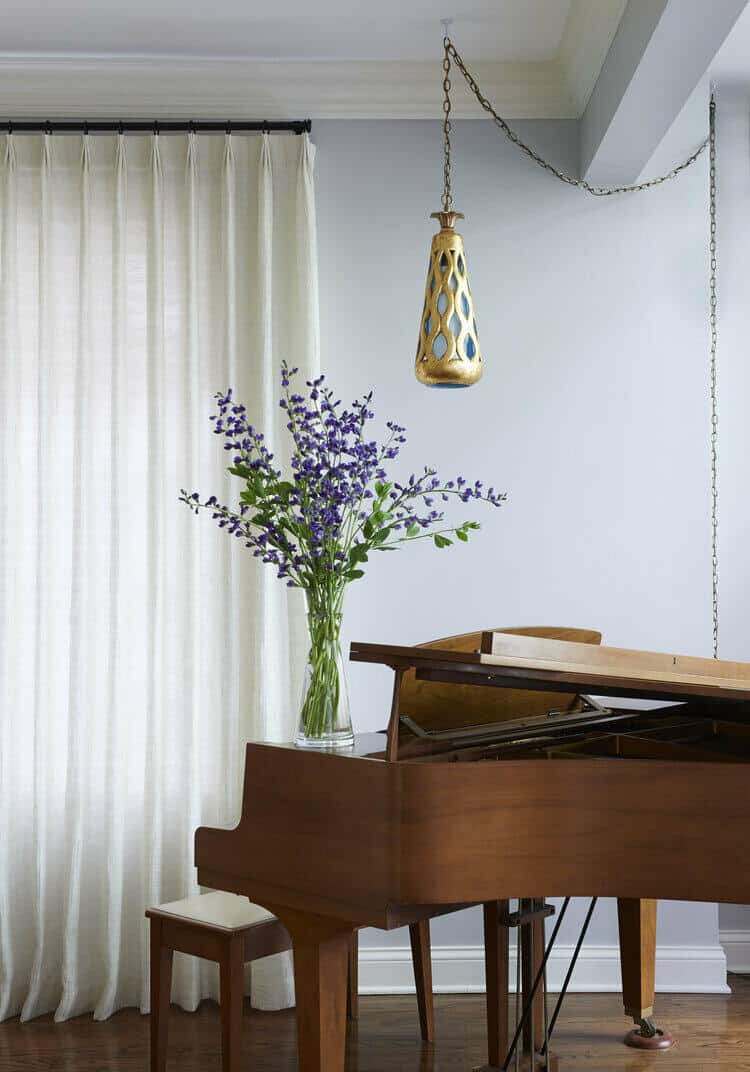
Tips from the Pros on Designing Floral Arrangements at Home
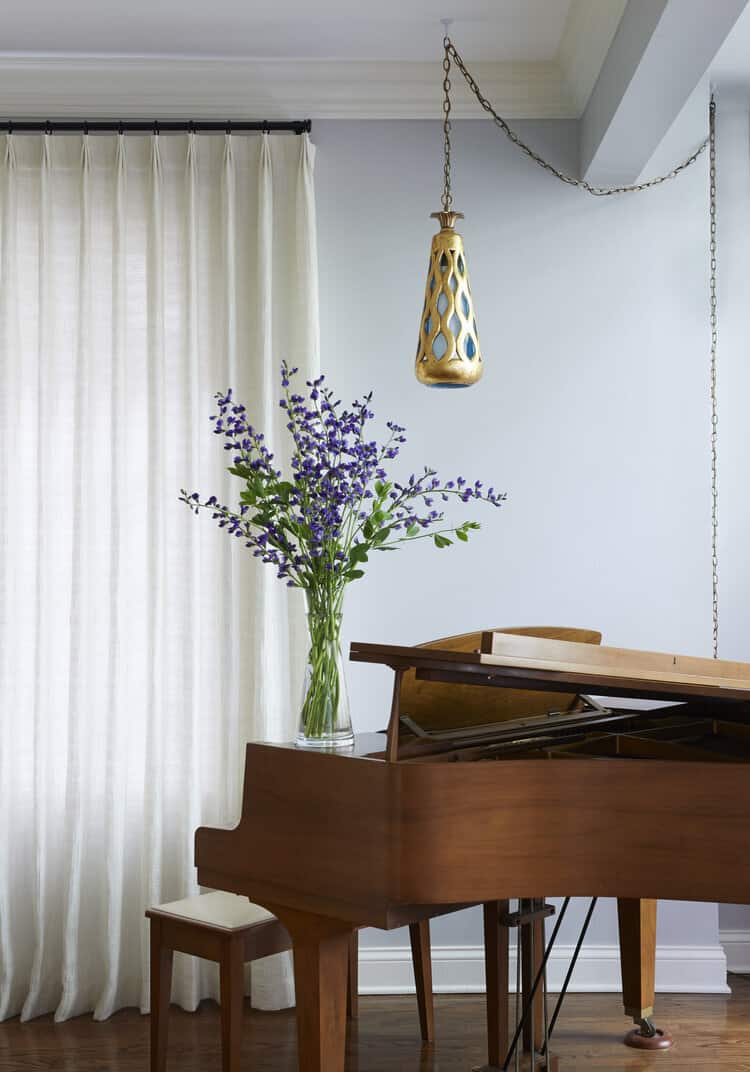
There’s no denying a freshly cut handful of blooms can wake up a room like nothing else. If you’re craving fresh air and sunny summer adventures as much as I am, fresh flowers can instantly add a much-needed dose of liveliness and joy to a space that has begun to feel a bit stagnant. To help you make the most of those blooms, whether from the garden, grocery or florist, I’m excited to partner with my friend and colleague, Hilary Rose, to share some tips on how to bring florals into the home. Hilary is a nationally published photo stylist whom I work with on countless projects. She has an innovative take on floral styling and an incredible talent for adding chic blooms and greenery to home designs, capturing a mood and translating it into a stunning arrangement.
Bringing together tips from both my design perspective and Hilary’s styling perspective, today’s blog post Q&A is filled with tips on how you can design beautiful floral arrangements that instantly elevate your home design, adding an unparalleled warmth and liveliness to your space.
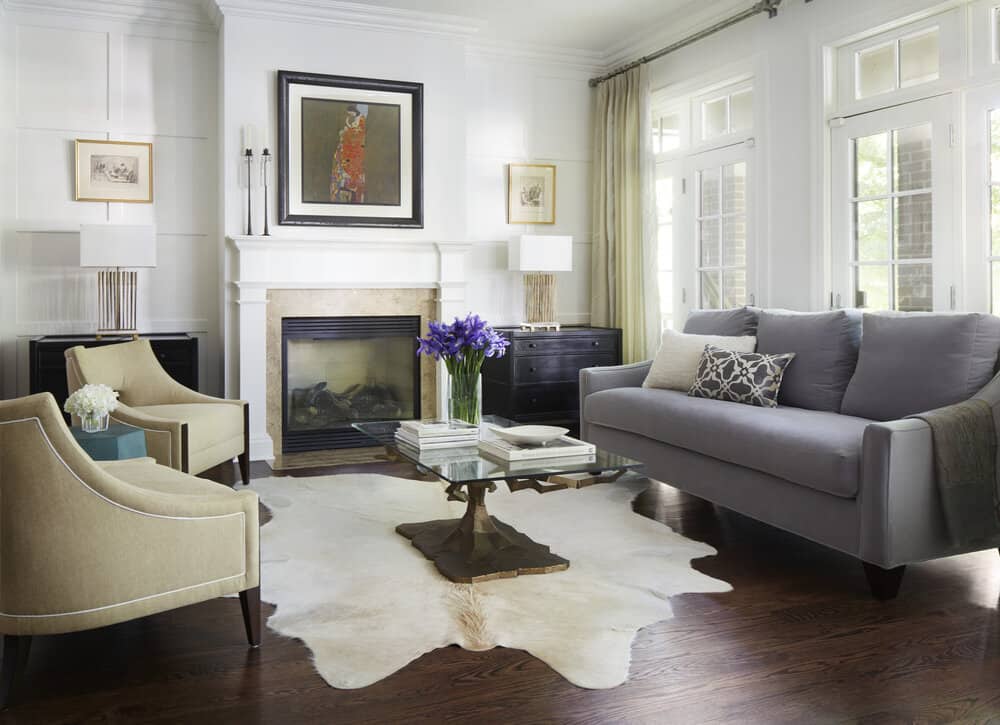
What is the first thing to consider when envisioning your floral arrangement?
Hilary: As I stylist, rather than a florist, my first step is to take in the room around me. I consider the style of the room: is it traditional, modern, cottage, or urban? For example, a modern, more minimal location calls for sculptural branches, leaves, simple architectural flowers. Think: Calla lilies, bird of paradise, or palm leaves. A cottage look begs for garden flowers: hydrangea, delphinium, or tulips. Generally, I want to complement the style of the room with flowers. As a stylist, like an interior designer, I consider color, shape, scale, and texture.
I also like to consider how the room “feels.” Is it romantic, playful, or serene? For me, flowers have attitude: French tulips are graceful and sexy; sunflowers are fun and happy; hydrangeas are warm and welcoming. I always like to interpret the feel of a space with flowers.
The above shot showcases an iris that adds some energy, providing a punch of color. It’s not so intense as to become a focal point, but enough to add some warmth.

How should the design of a room impact your choice in flowers?
Amy: Your floral arrangement should become a part of the room’s design, while adding liveliness. While a bit of contrast in terms of fullness, femininity, height or style can add some interest, it should still be guided by the design, complementing the style and transcending the feel of the room to give an effortlessly beautiful look.
In some settings, simplicity in floral design can be even more impactful than an extravagant display. A few beautiful blooms or a bundle of greenery can bring in a dose of texture while avoiding overpowering the room with their colors.
Hilary: Amy and I brought her studio to life with gorgeous agapanthuses that perfectly complement the space. Edgy and cool, I thought this space could use something playful. The agapanthus is fun, and only gets better as the blooms open.
Once you have a vision, how do you select florals? What tips do you have for pairing?
Hilary: Once I step foot in the florist’s shop, the grocery store, or even as I walk through gardens, I’m driven by what I see. I love to be surprised by finding something unexpected and wonderful that brings my vision to life.
I generally don’t mix flowers, but when I do, I tend to lean towards complimentary colors with varying textures: a variety of white flowers, a mix of reds/pinks/oranges, or blues and purples. Whether it’s a large grouping of the same flower, or a variety of blooms, let your creativity loose and have fun. Know that whatever you have at-hand, adding flowers to your decor is always an upgrade! I remember renting an apartment while visiting my daughter in Buenos Aires. Outside our vintage Airbnb there was a man selling flowers, and it was truly the perfect touch to make our rental all the more charming and welcoming. Whether styling a shoot, or just doing flowers at home, fresh florals add so much not only visually but but also emotionally. Plus arranging flowers can have a calming effect, and who can’t use a little stress-reliever?

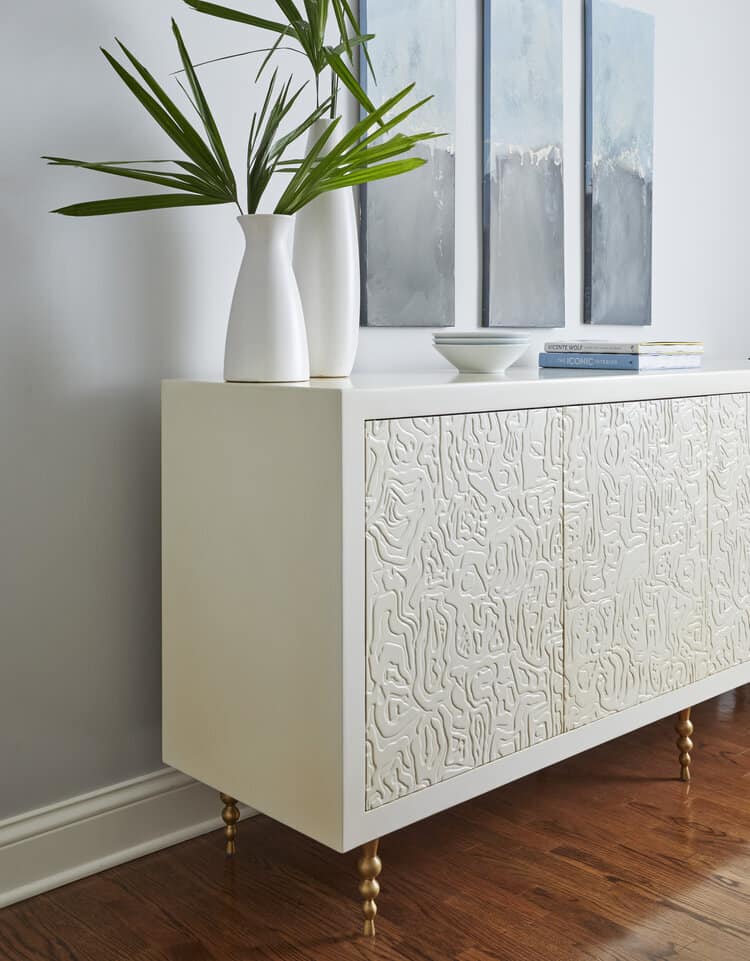
What about greenery?
Hilary: Sometimes it’s not about the flowers at all. Greenery can add amazing impact to the space while complementing the design. Above at left, I used assorted greens to punctuate a wonderful ceramic collection. While in the photo on the right, we used large palm leaves that added a touch of organic sculpture (while lasting forever… almost). The palms perfectly guide the eye to the beautiful artwork.
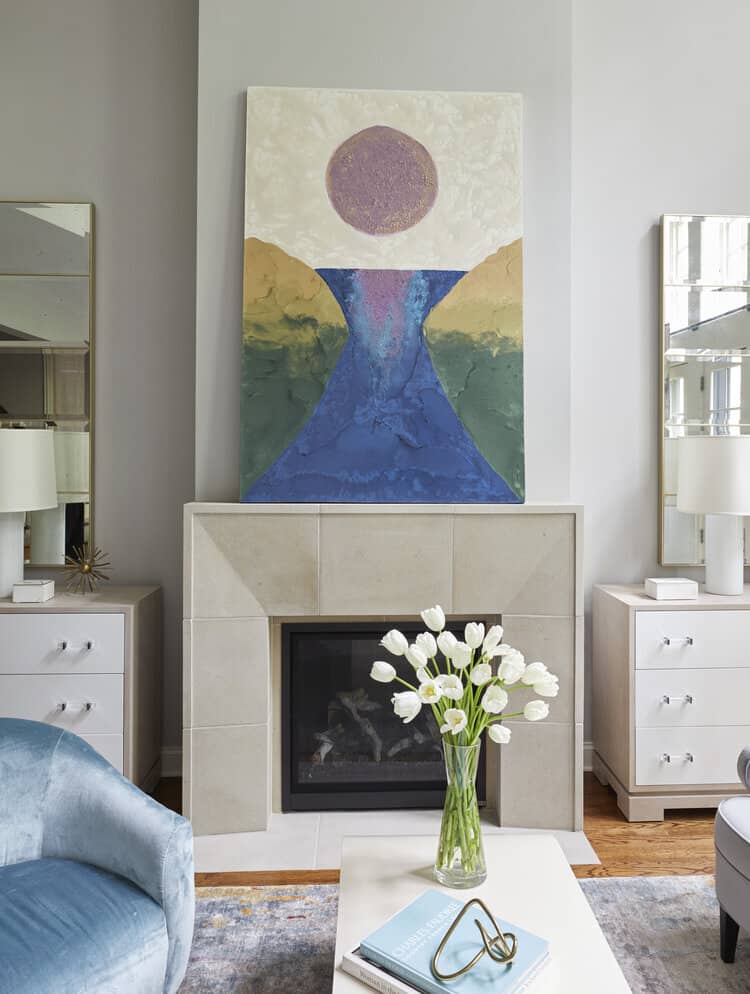
If you had all of the options in the world, what flowers would you pick?
Amy: If I could only fill my home with one type of flower, it would be peonies: any shade, any color; peonies simply have my heart. They add so much delicate, beautiful texture with their endless layers of soft, frilly petals. They are the perfect touch for any room and their scent is unparalleled, completely transforming the space. Sadly, they have such a short blooming period, but when it’s peony season, we certainly take advantage of it at our house.
Hilary: Tulips are my personal favorite, as I think they’re perfect almost everywhere.
Once you have your flowers or stems, how do you decide on a vessel?
Amy: The vessel is a key component to floral design that should never be treated as an afterthought. It plays a critical role in tying the floral display to the aesthetic of the home and properly showcasing the flowers themselves. My essential guideline? As in furniture design, prioritize scale. A vessel that swallows your beautiful blooms, or doesn’t support your stems, can take away from the display. Consider the container as you select blooms.
Once you have your flowers and your vessel, what tricks do you have for arranging them?
Hilary: I think the art of arranging is actually to do as little arranging as possible. Let the florals fall into place for an effortless look that feels warm and inviting. For example, in a recent project, we added calla lilies with a lovely natural curve into a room with a beautiful curved brick entry to complement the design. The lilies fell into place and simply arranged themselves. I’ve found the more I stay out of the way, the less I force things, the more successful the end result.
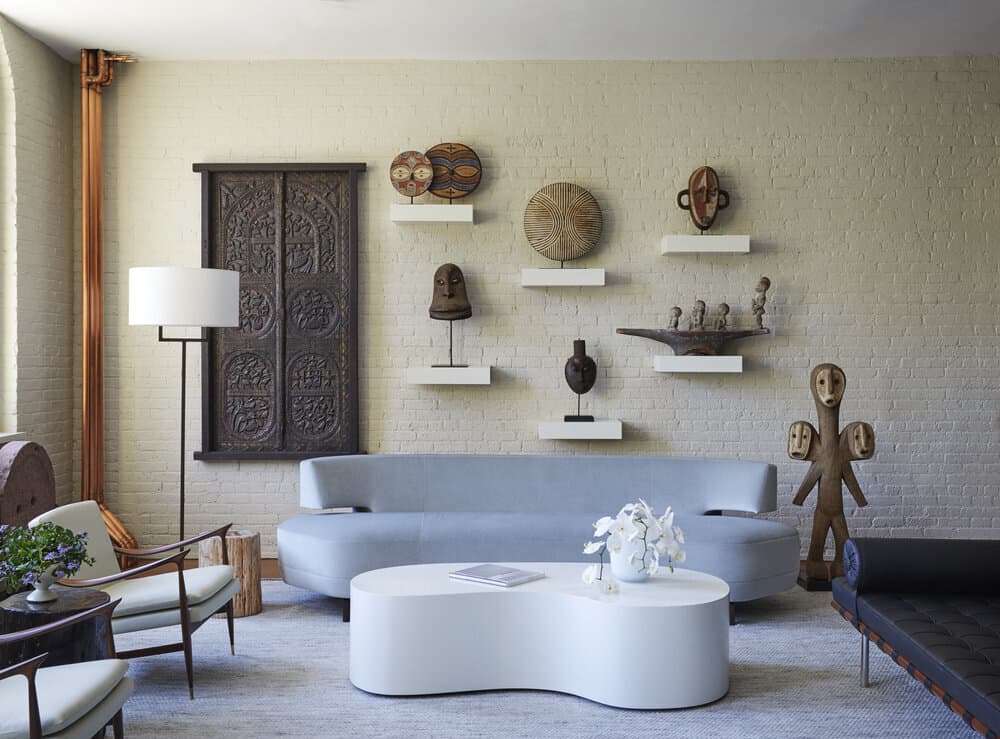

How does the design then guide the placement of florals?
Amy: It’s important to let the design lead the placement of the arrangements. Maybe it’s a few stems on a nightstand, placed on top of a stack of books, or maybe it’s a taller display on a dining room table, filling the space beautifully and intentionally. Hilary and I always let the design first and foremost guide us. For your own home, look around for areas that feel a bit stagnant or uninspired, and you’ll be amazed at how some fresh blooms can liven up a corner or fill an open space.
Hilary: Above is a perfect example of the design leading the placement. I love the location of these beautiful orchids and the unusual mix of styles, with a bit of glam. The white orchids add softness, while the shape plays to the architecture of the cocktail table and sofa.

What other tips do you have for creating floral arrangements at home?
Amy: Simplicity and minimalism in your floral selections can result in the most impactful designs. I love to buy a few flowers and either tie my arrangements at the stems, letting them fan out gracefully in the vase, or use florist tape to create a grid across the top of my vase and add a stem in each quadrant. I don’t let any blooms go to waste: save flowers with breakage until the end, and add them to smaller bud vases through your home, creating a little surprise around every corner.
Hilary: When it comes to the flowers themselves, always remember to give everything a fresh cut. Trim out most of the leaves, and ensure all of the leaves are above the water line. And then every few days, do this again (while also giving your flowers some fresh water.) Add a flower preservative to extend the life of your flowers. This is mandatory for branches or any flowers with woody stems, like hydrangea or lilacs.
Thank you to Hilary Rose for joining me for today’s Q&A. We hope you are able to bring some beautiful blooms into your own home using these tips to liven up your design.
amy kartheiser design
home
about
services
portfolio
press
contact
Copyright © 2025 Amy Kartheiser Design | Website design by the la.rue creative studio